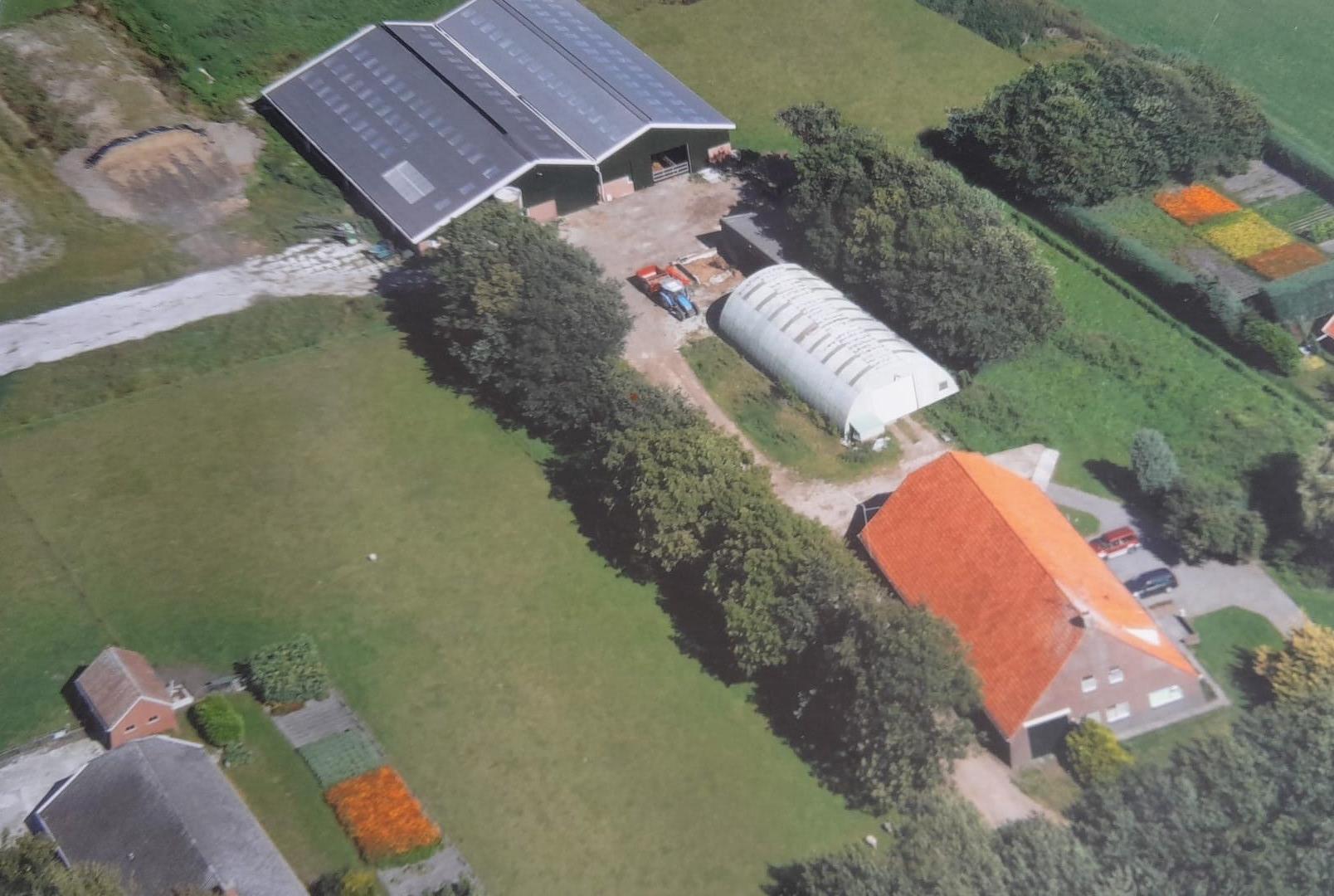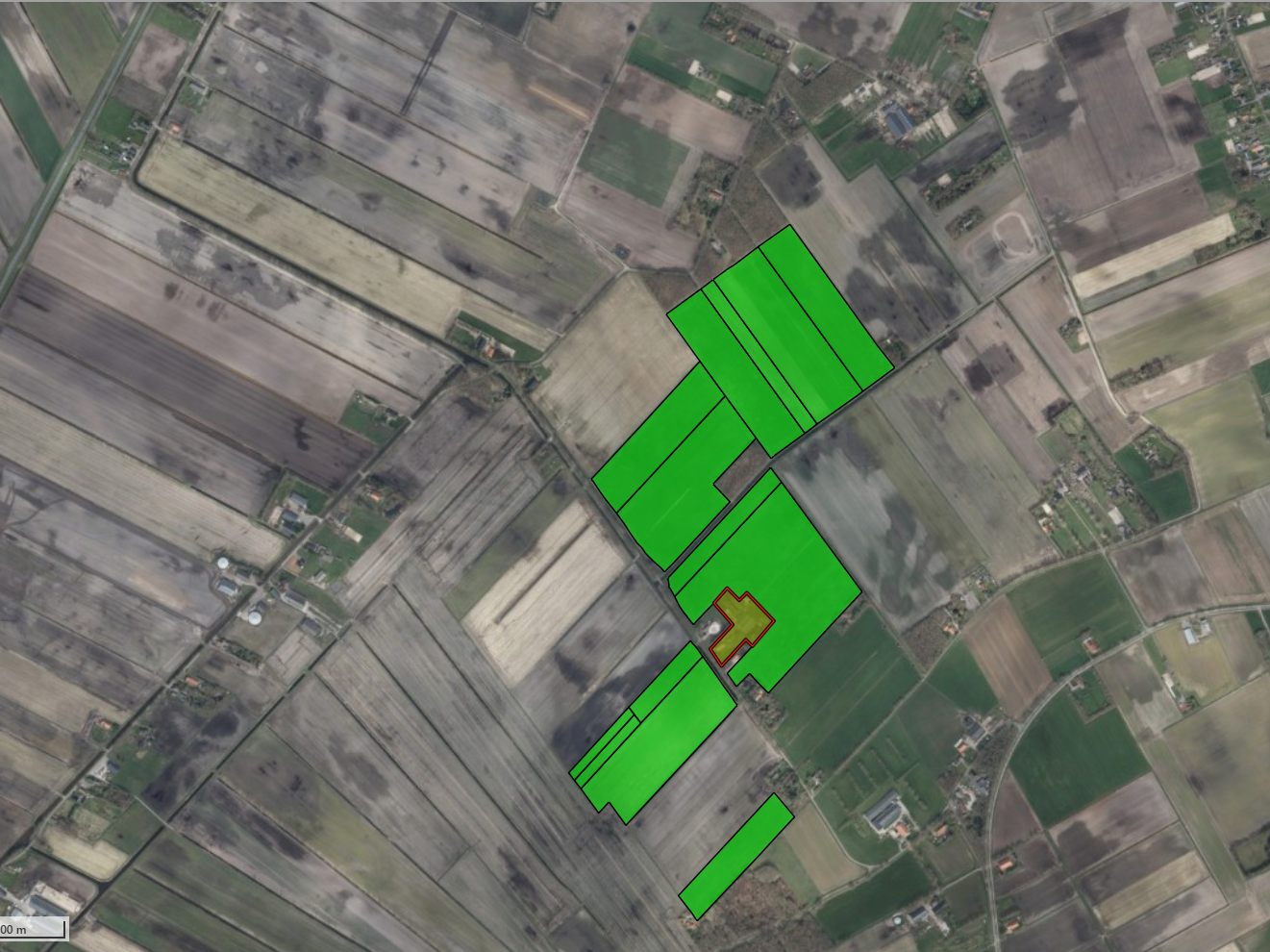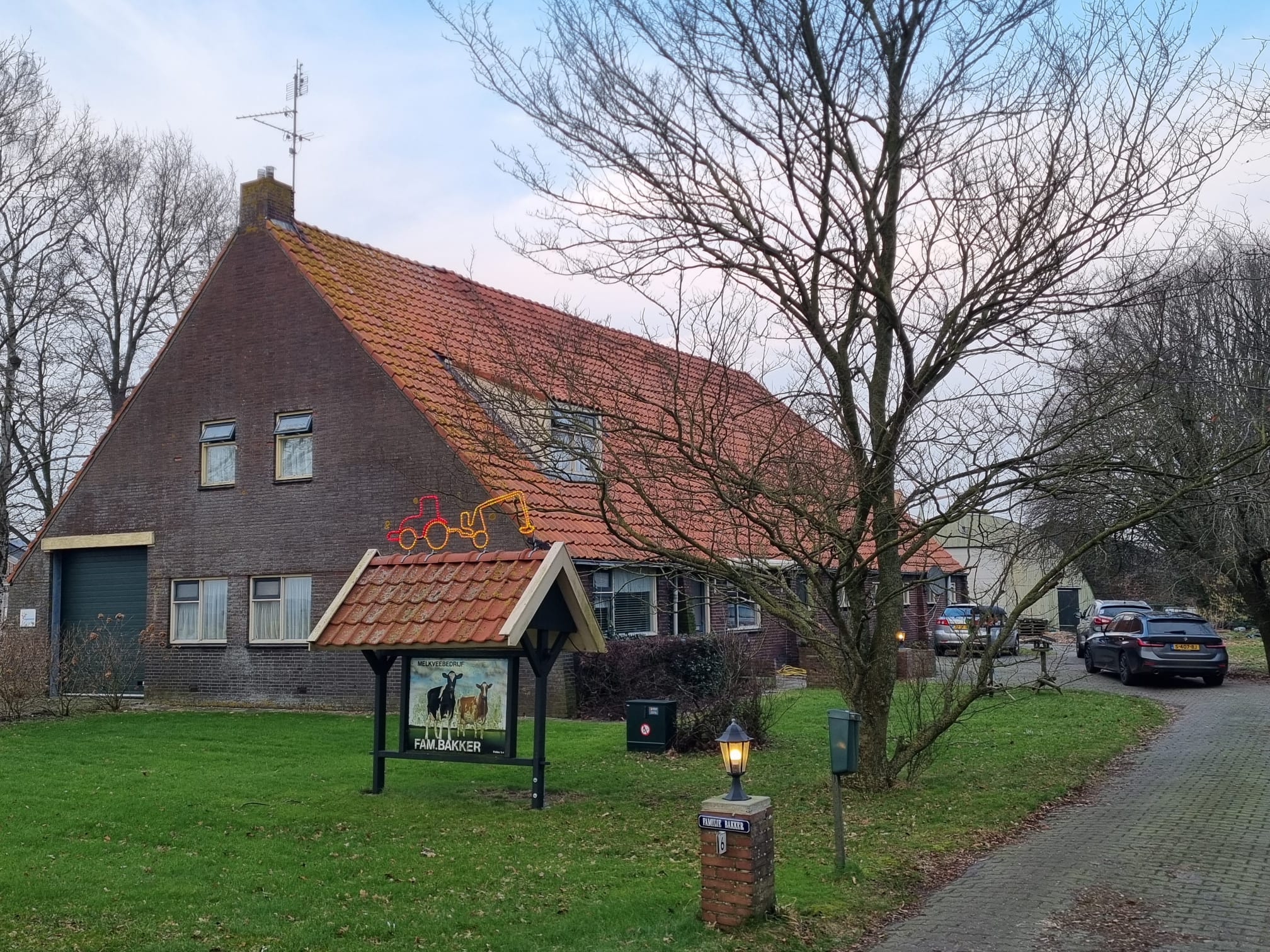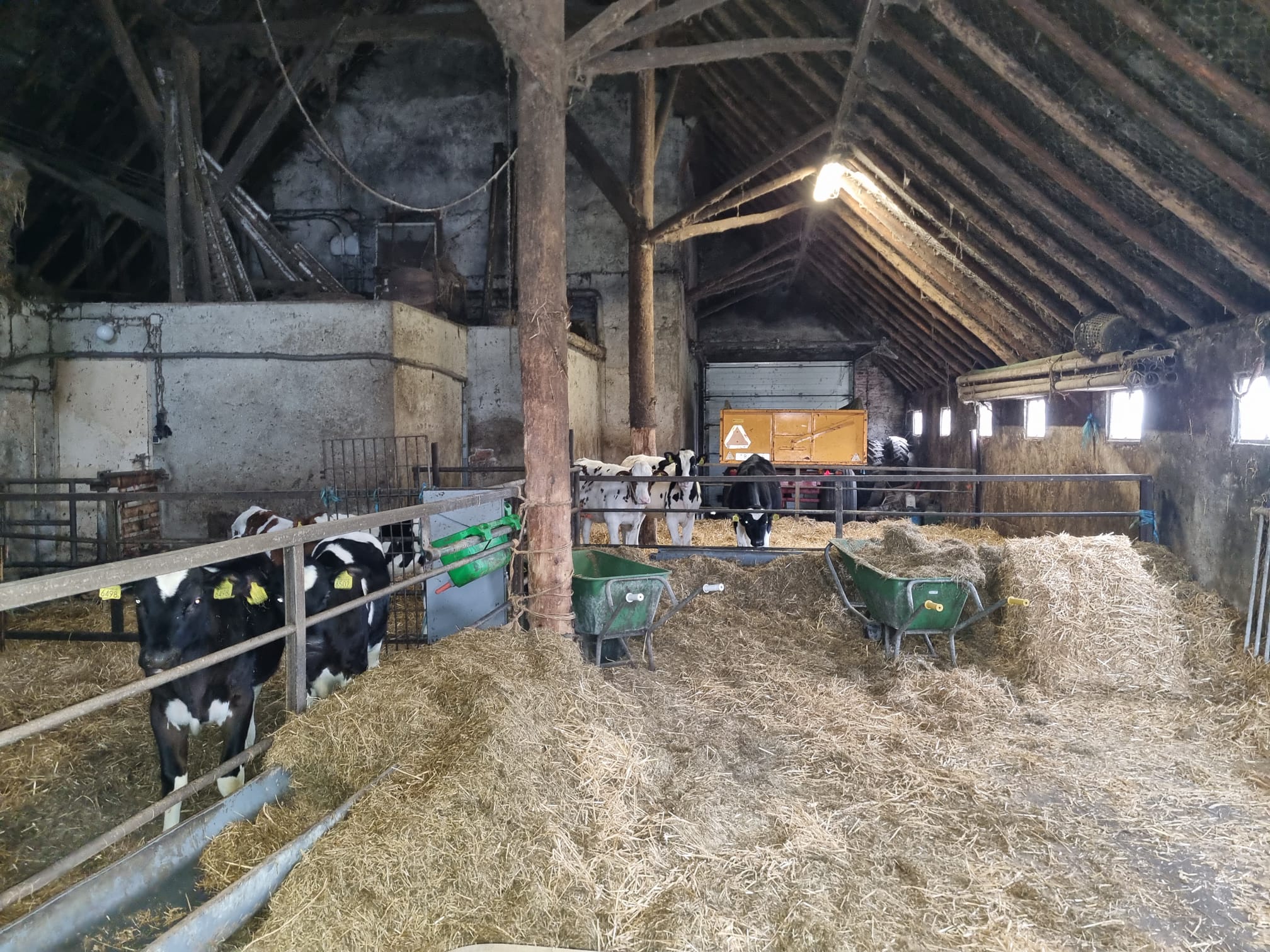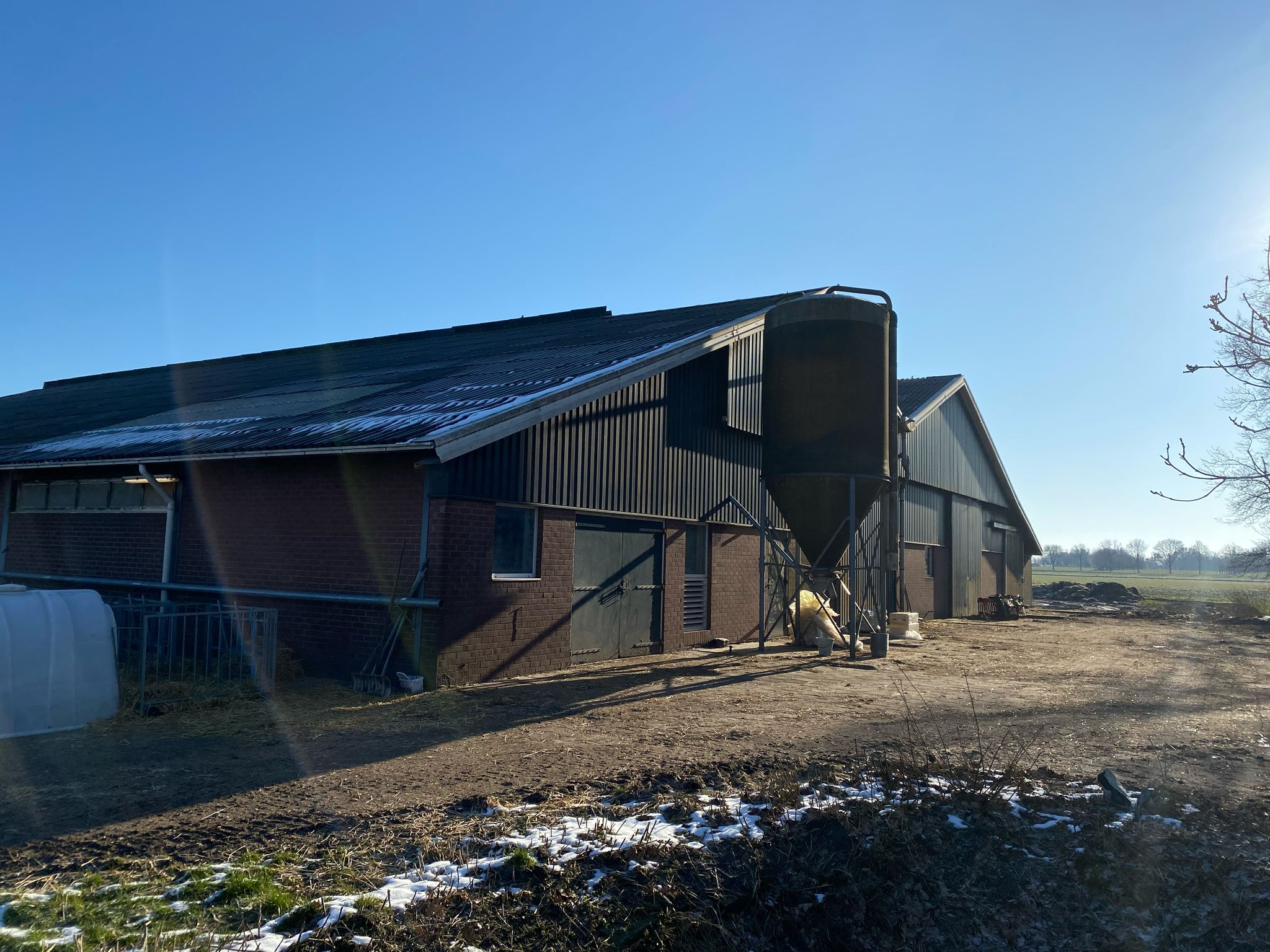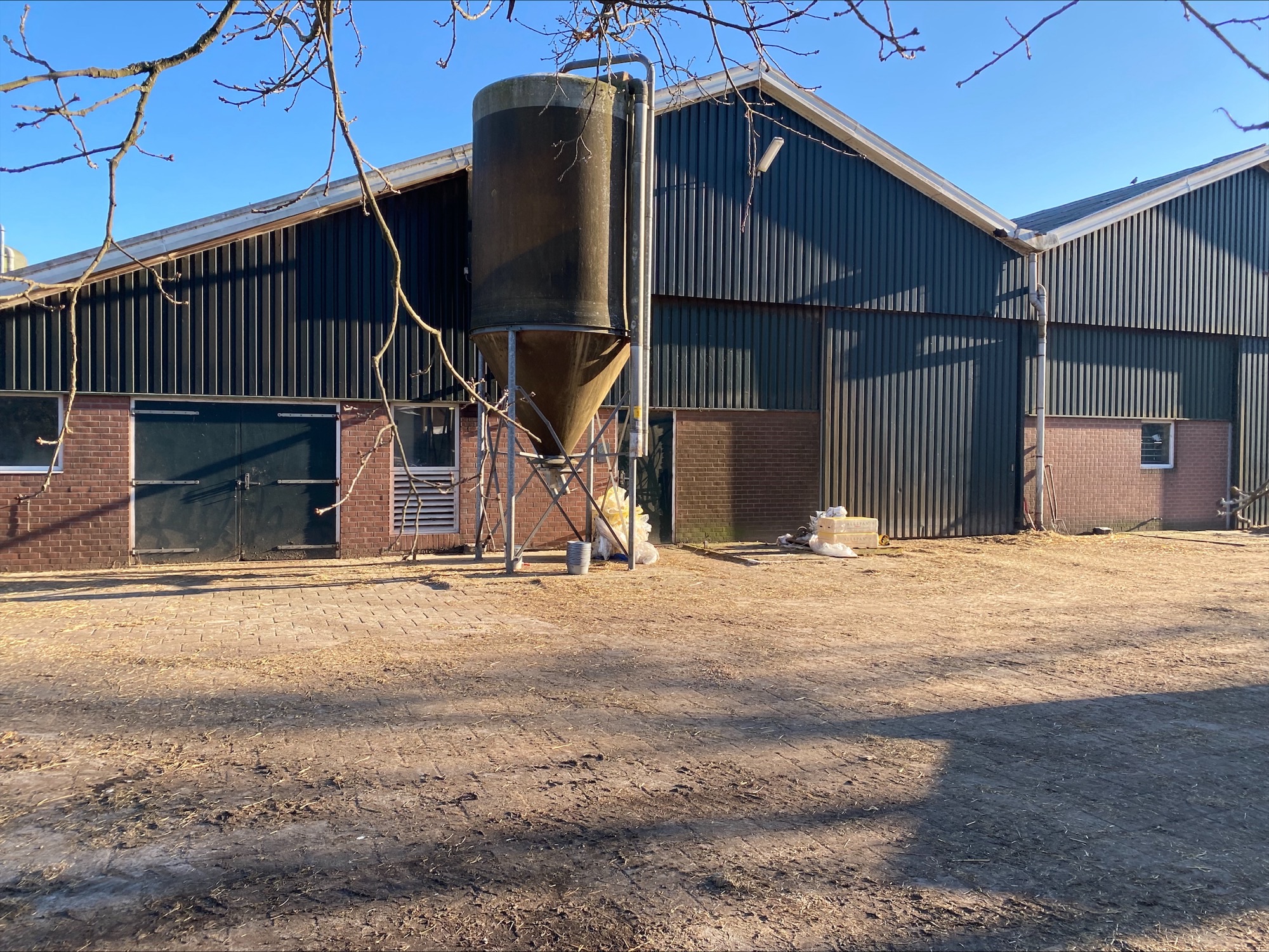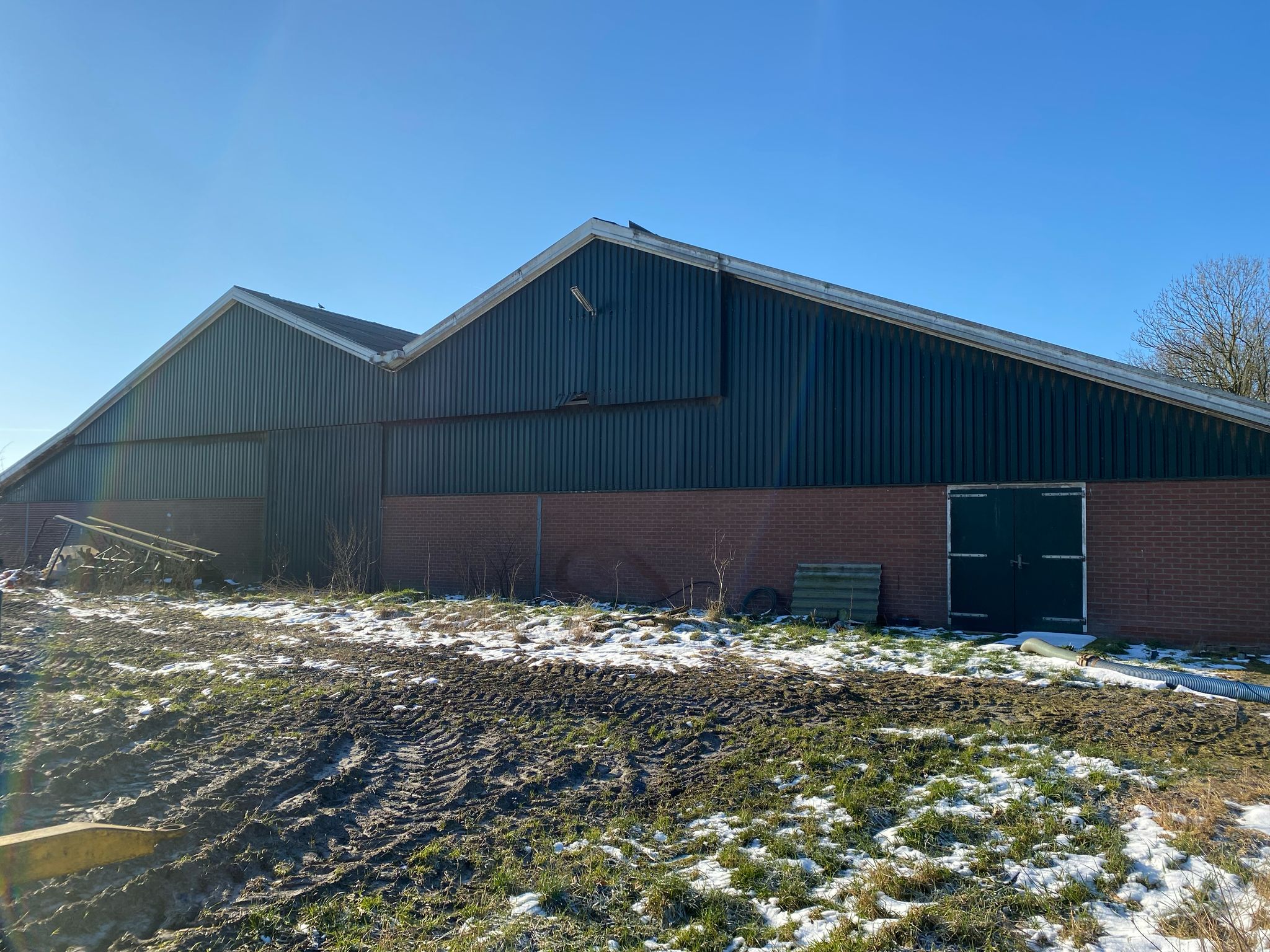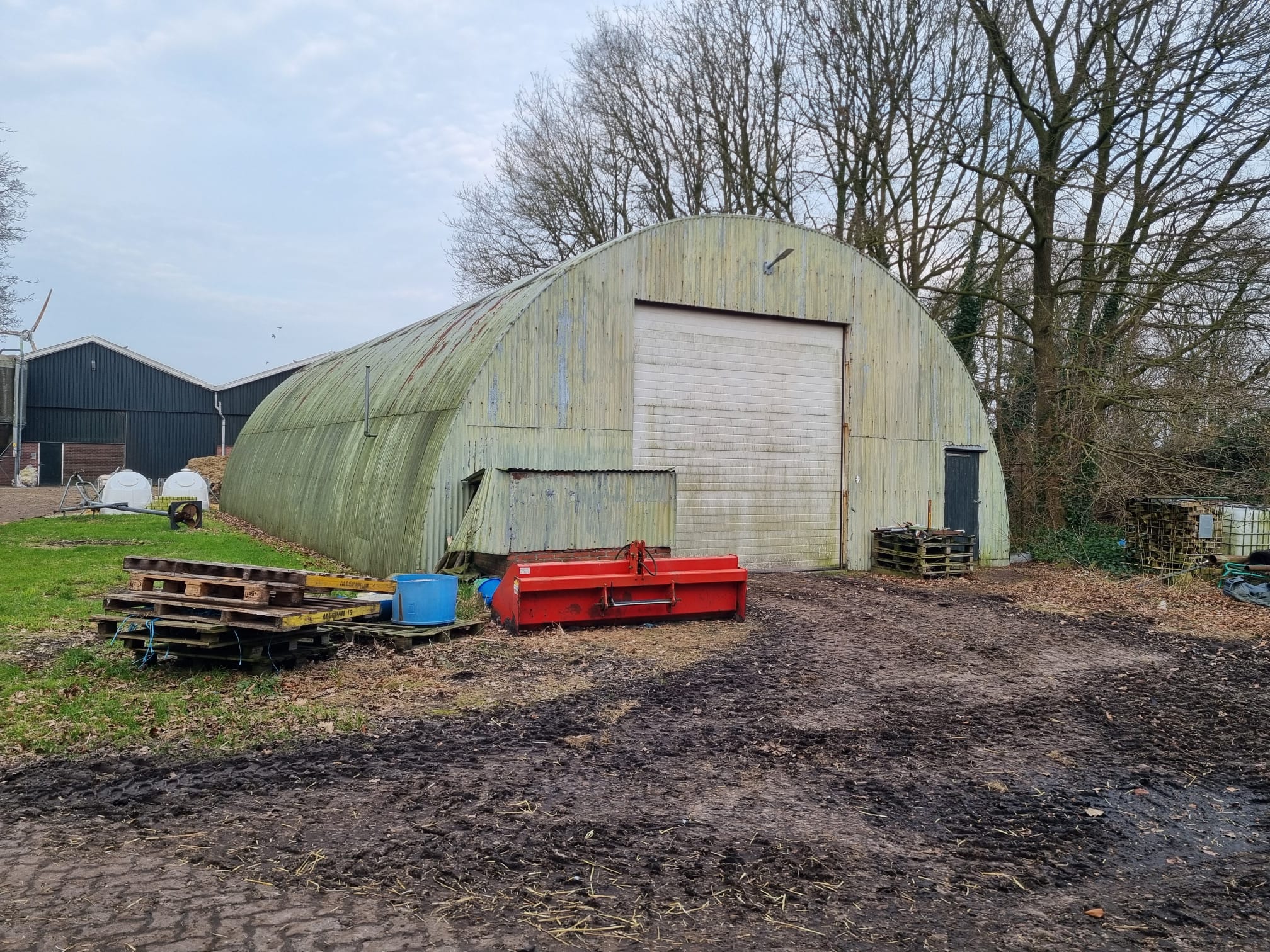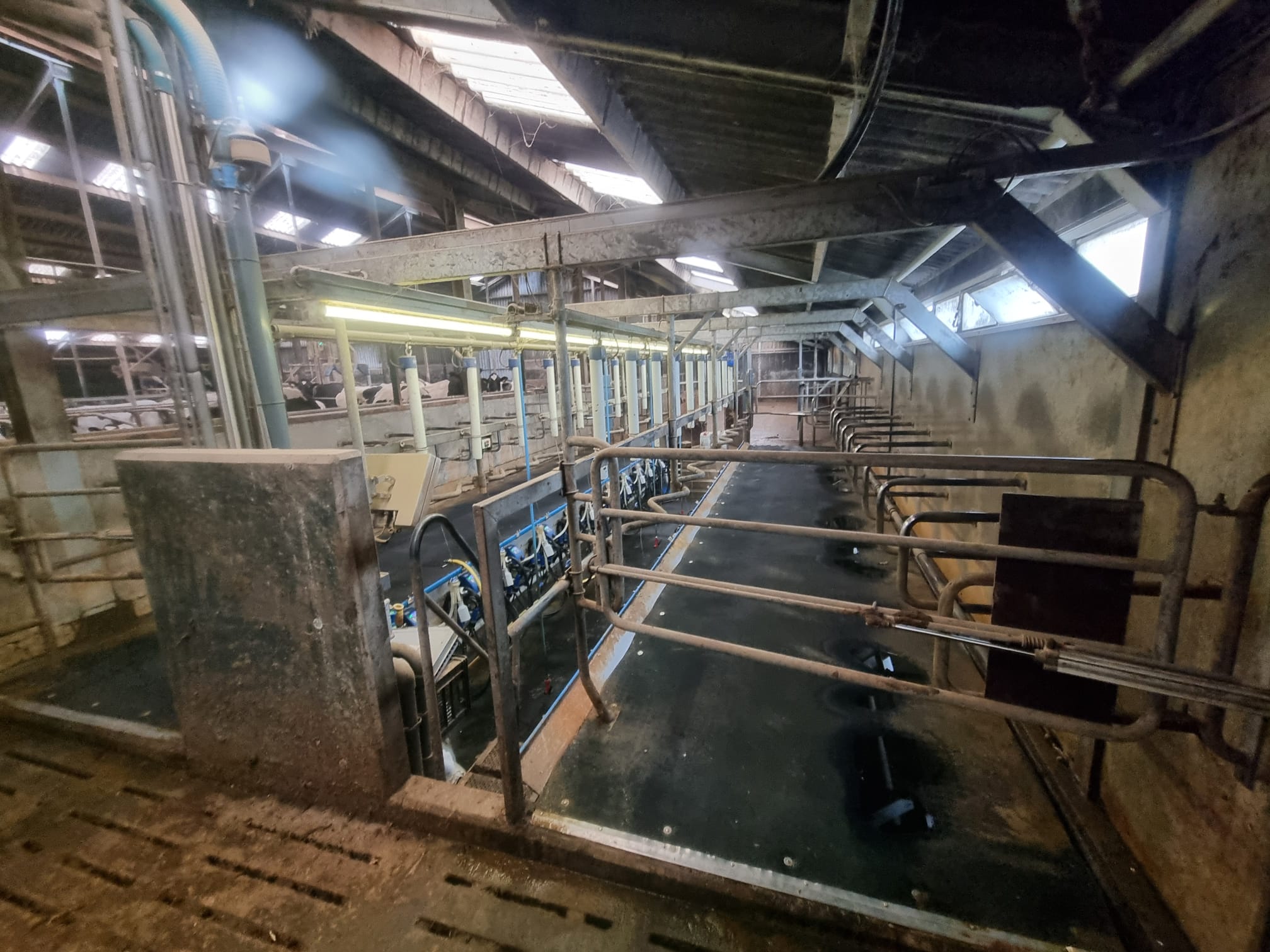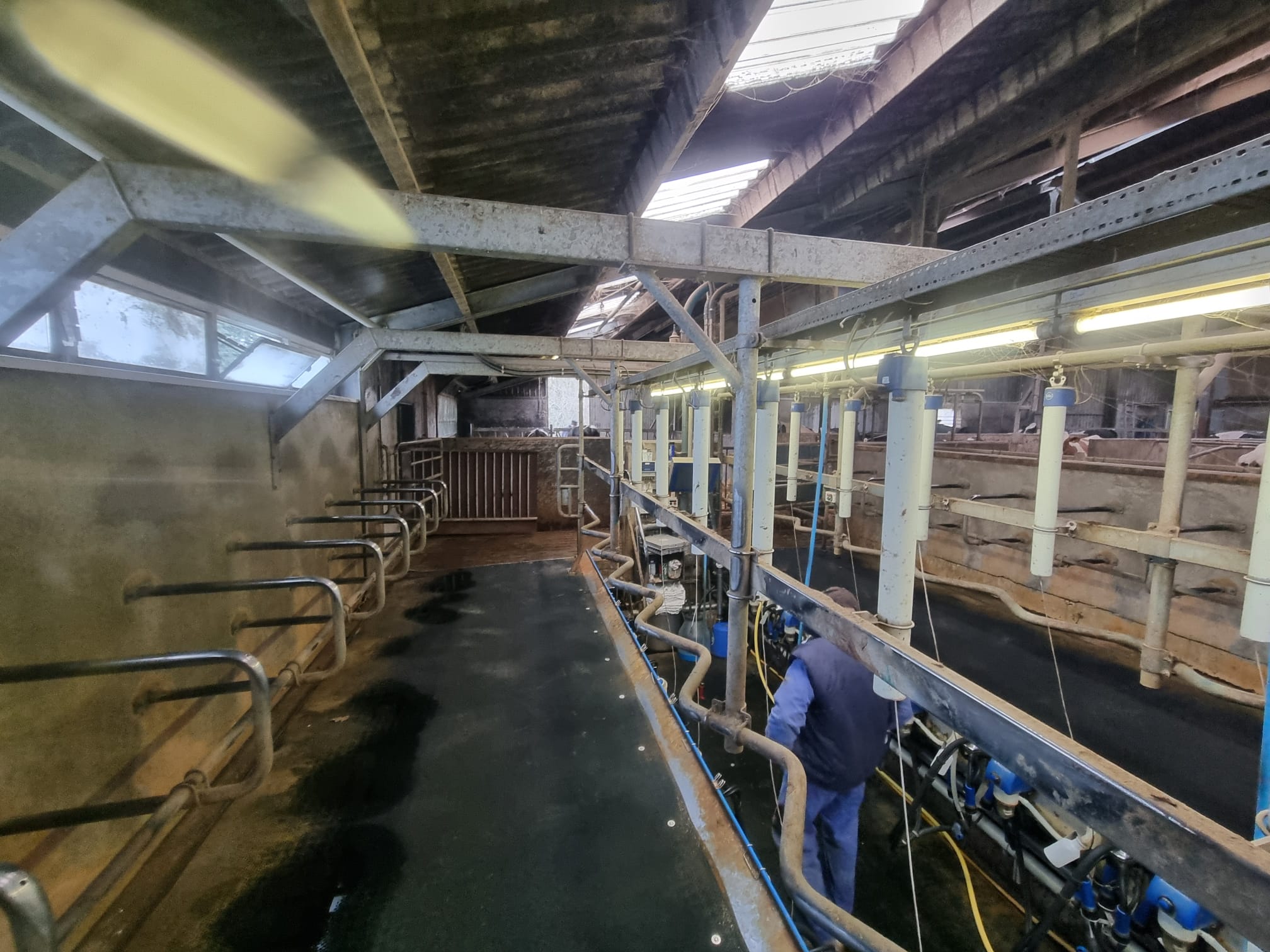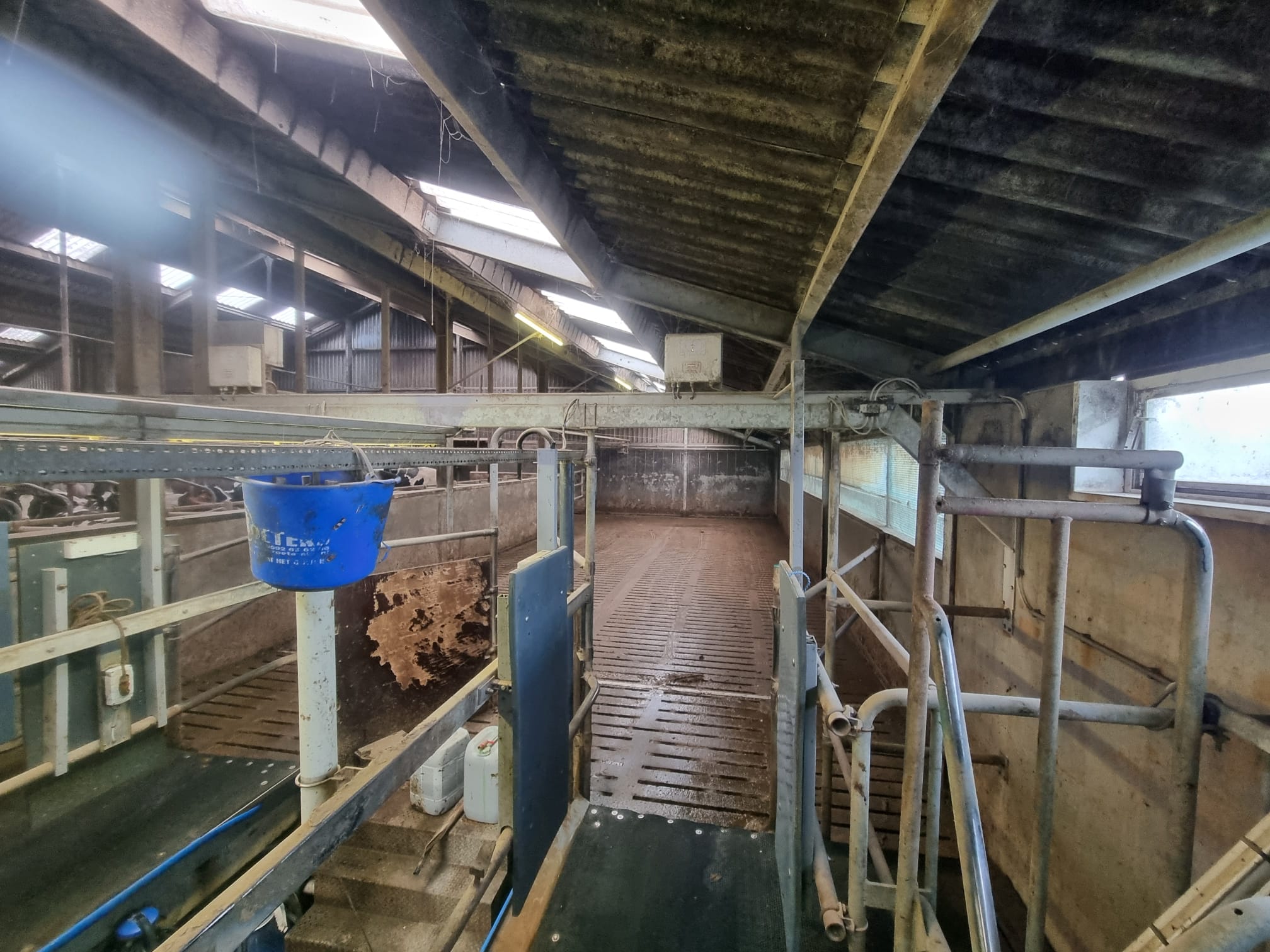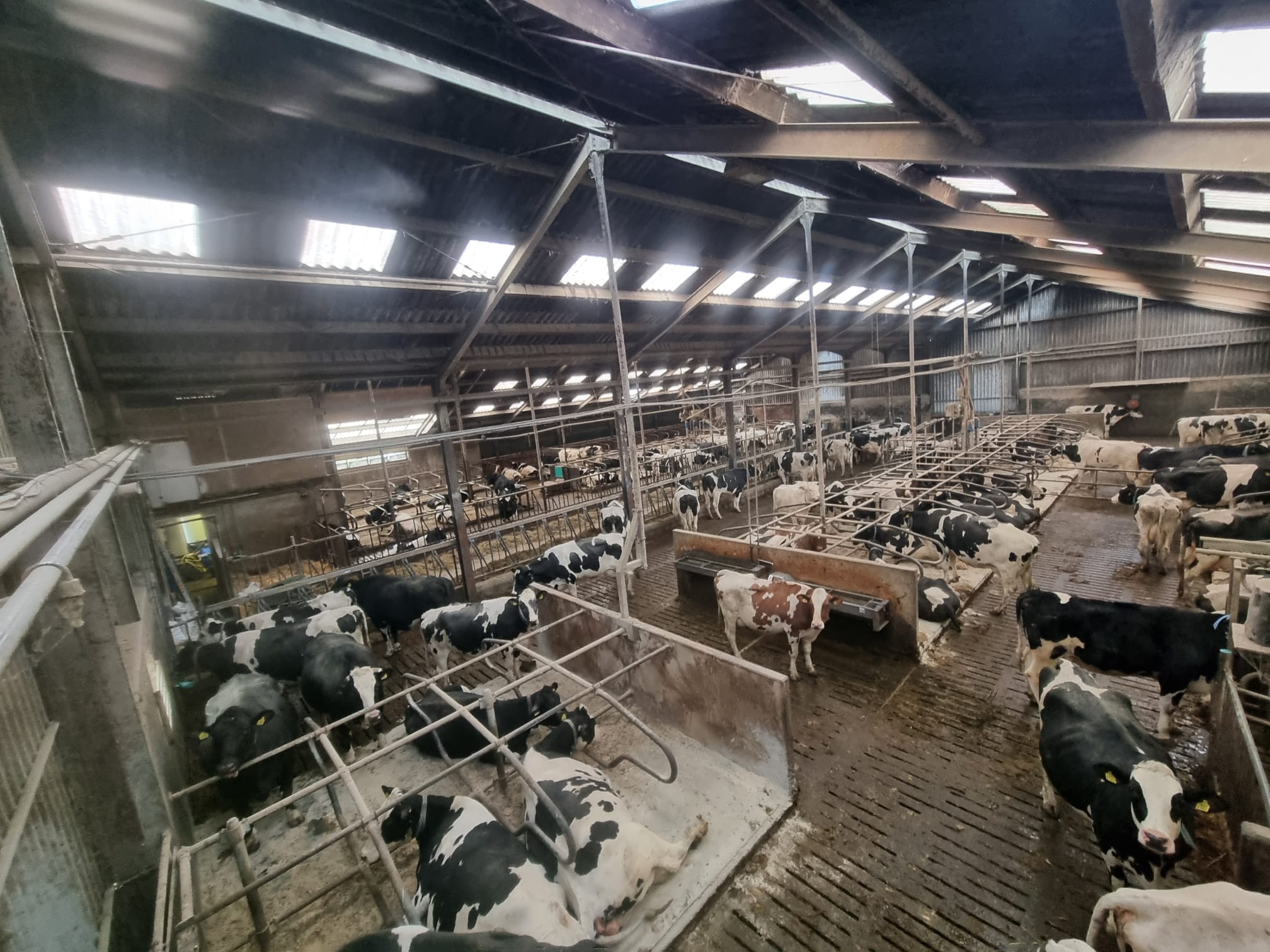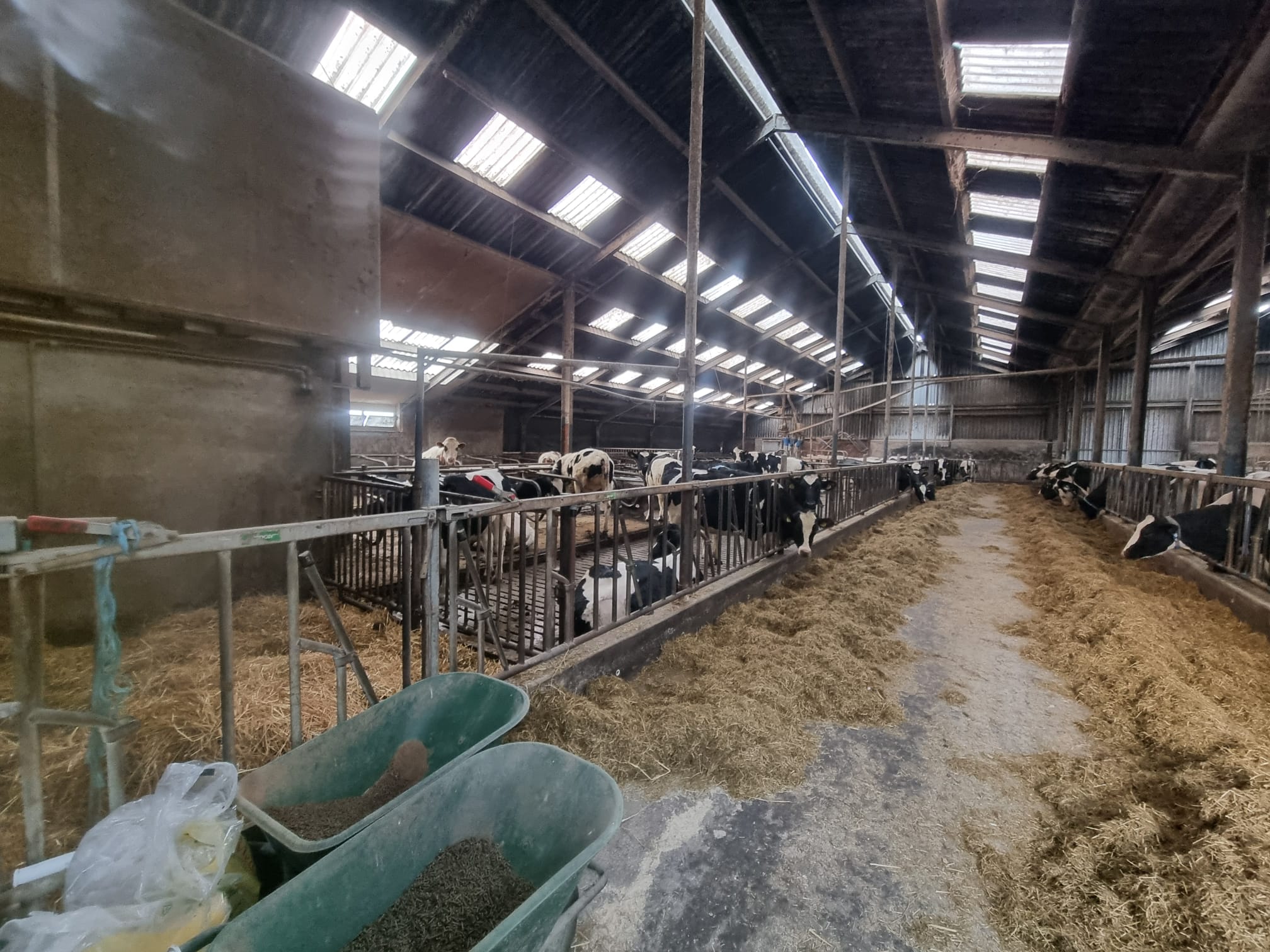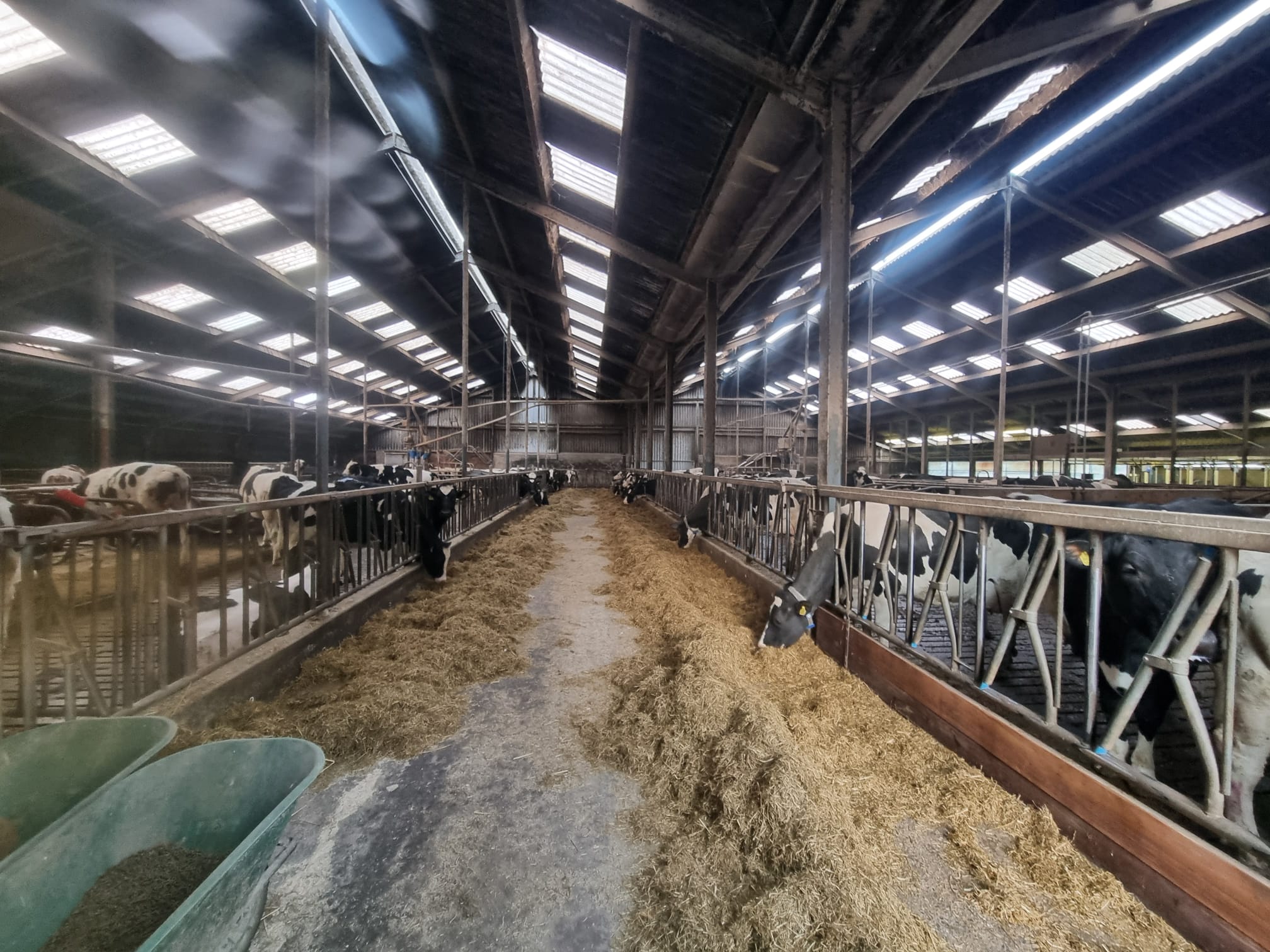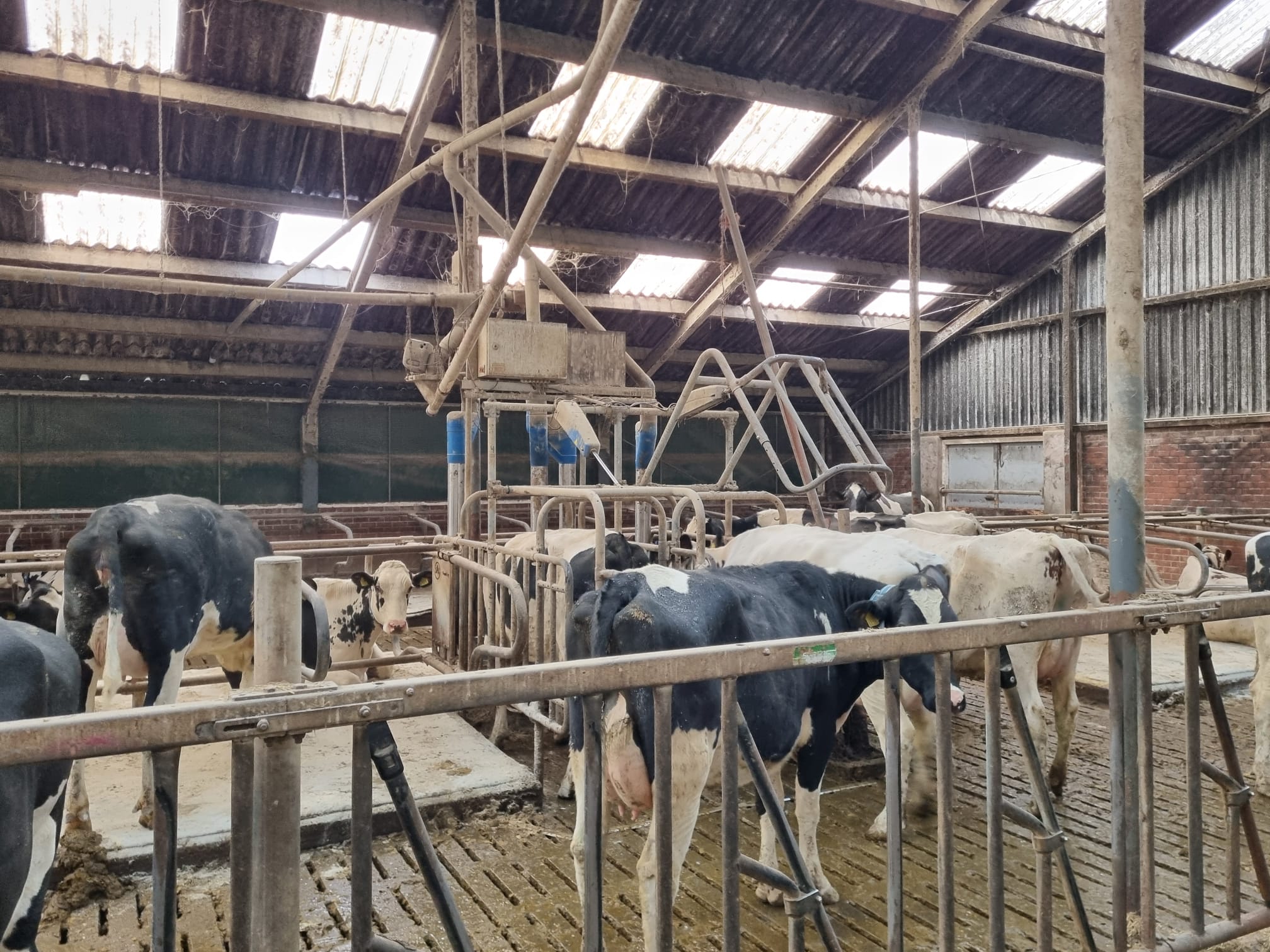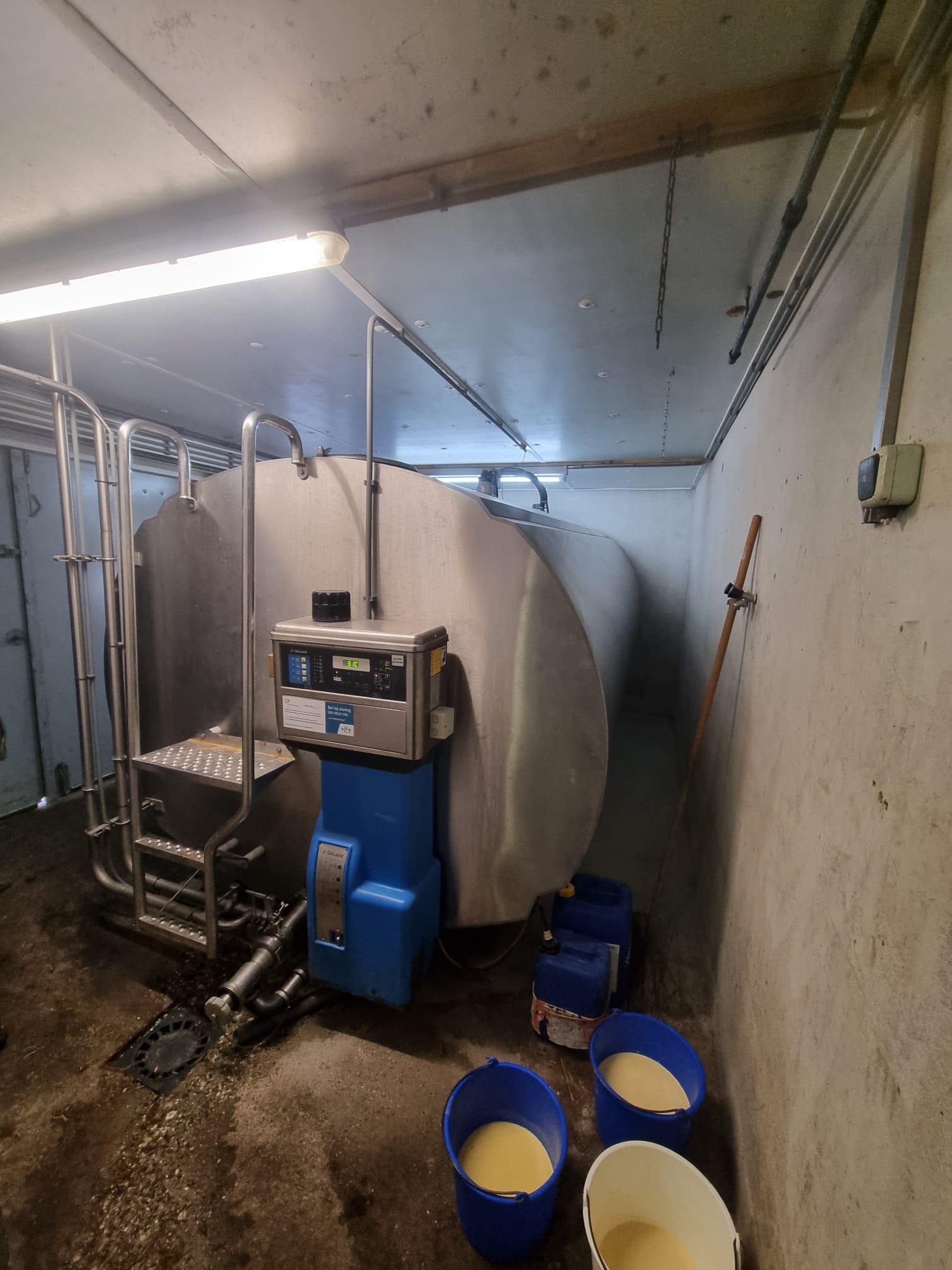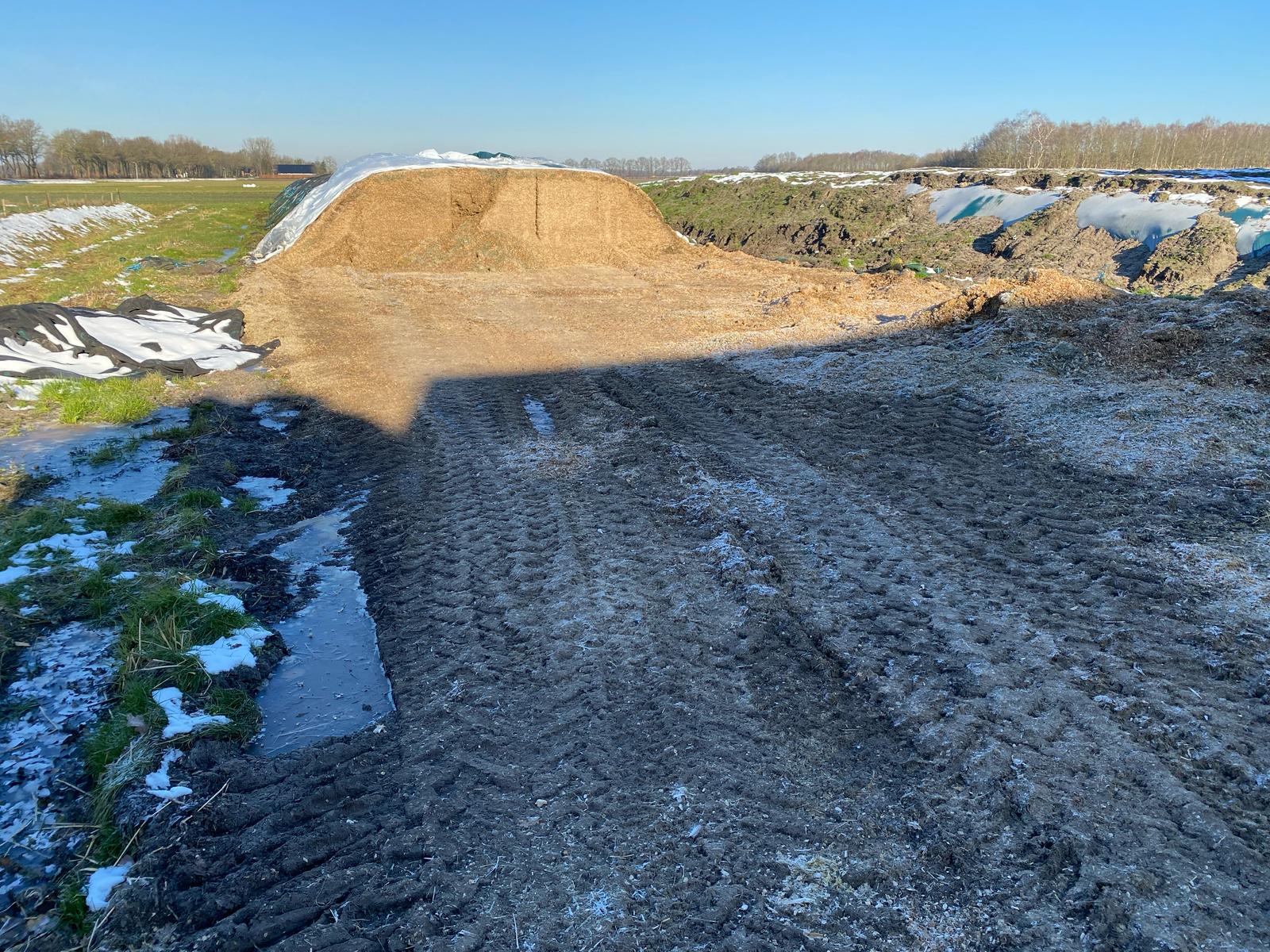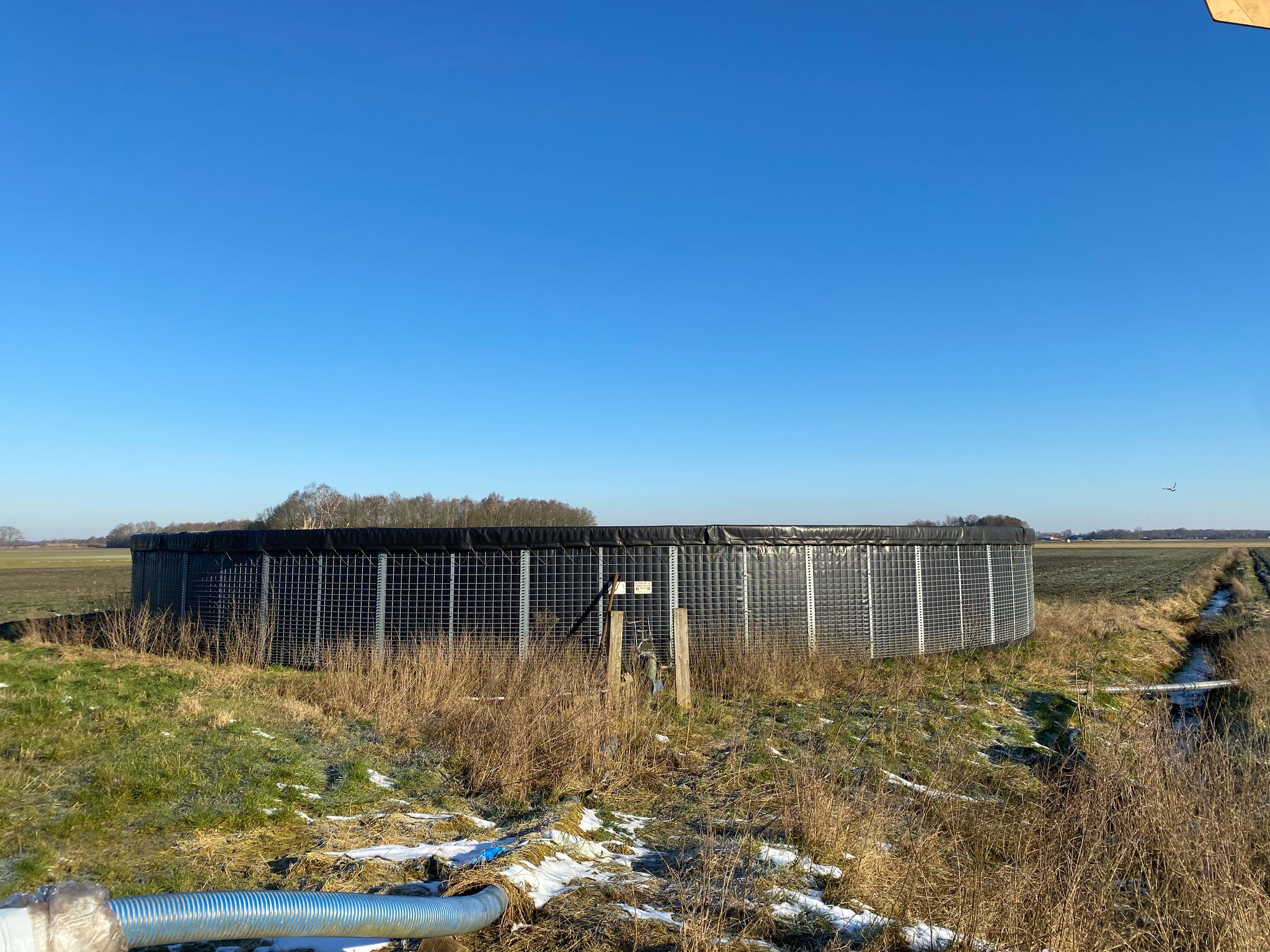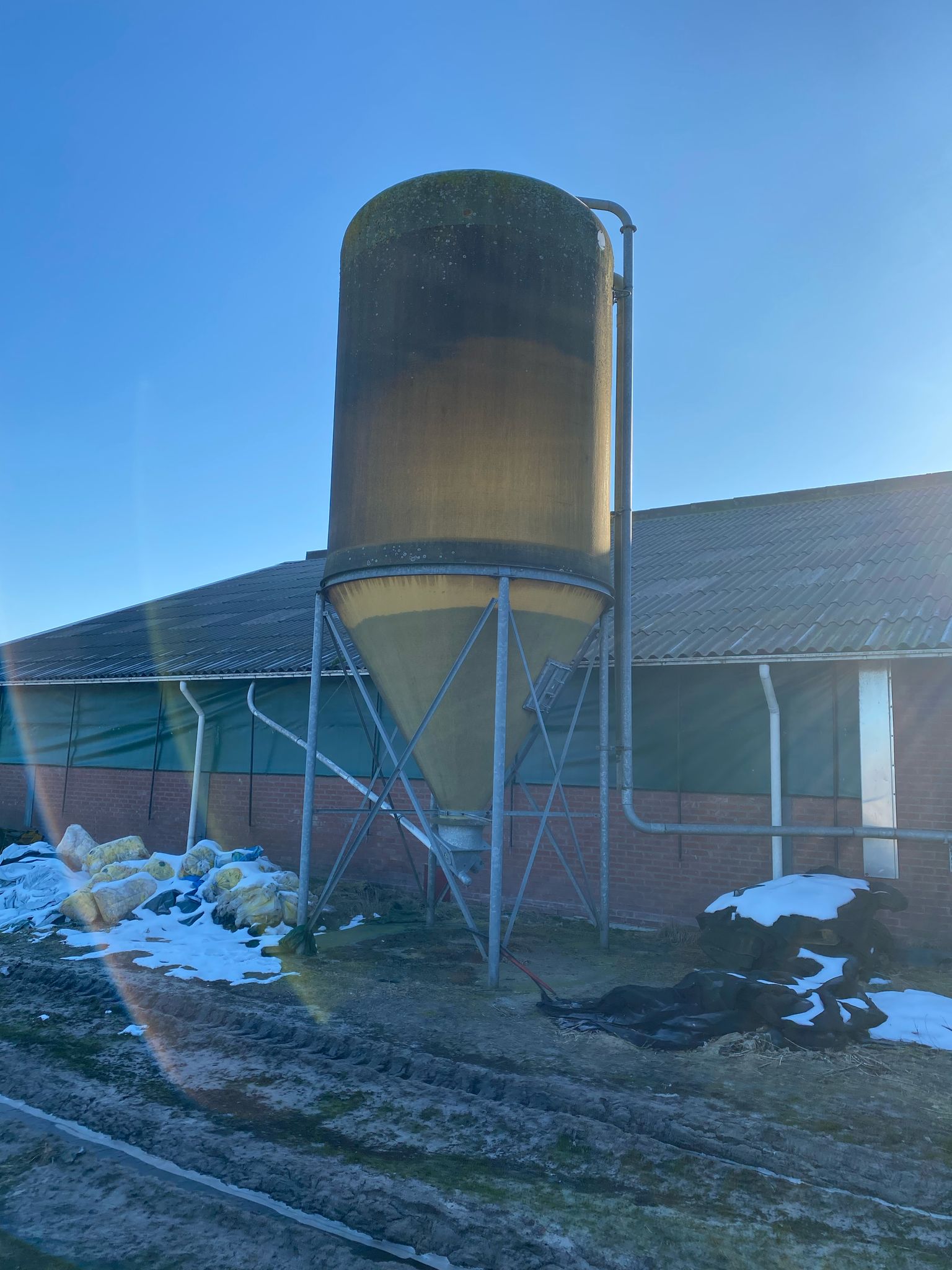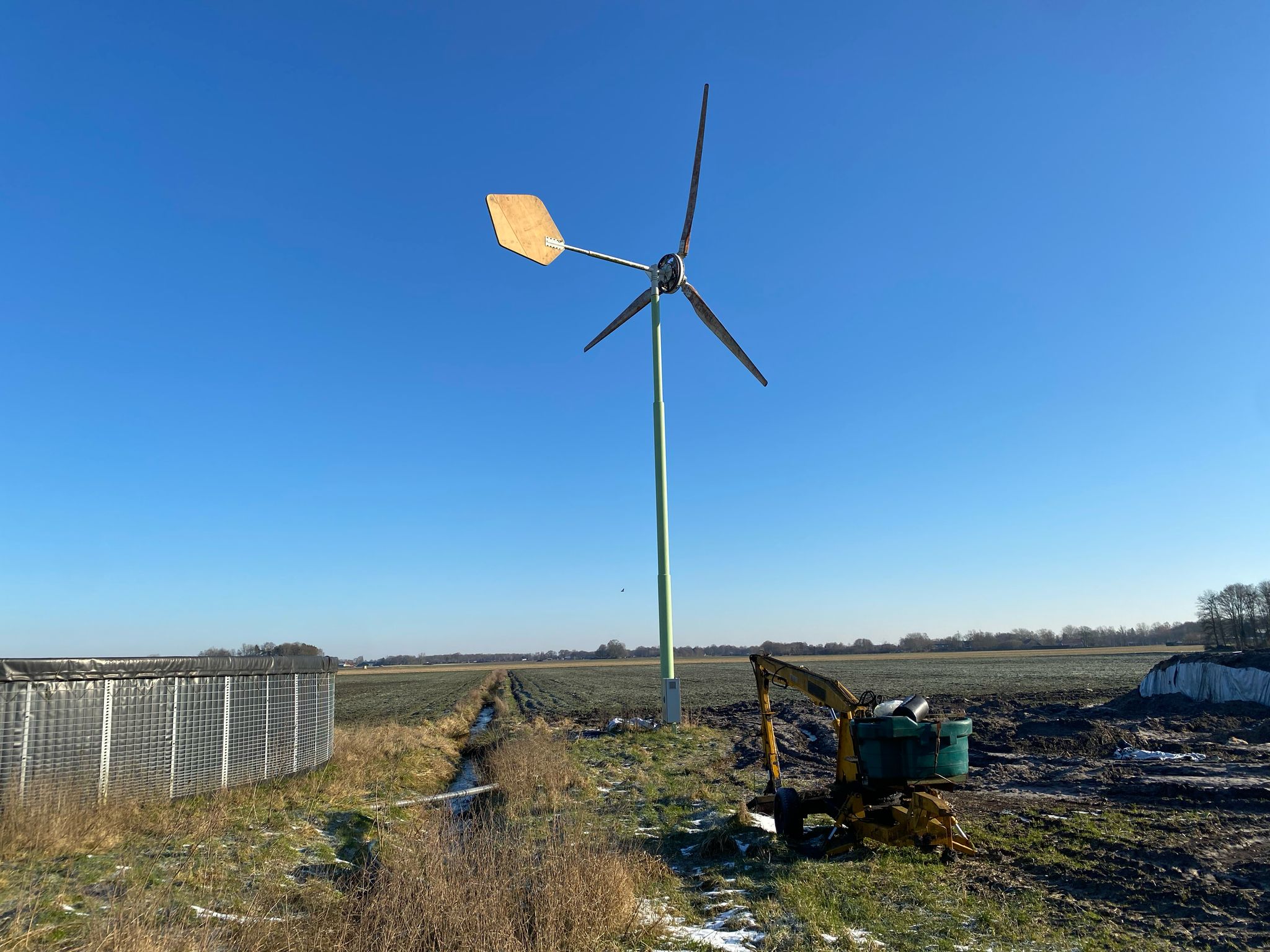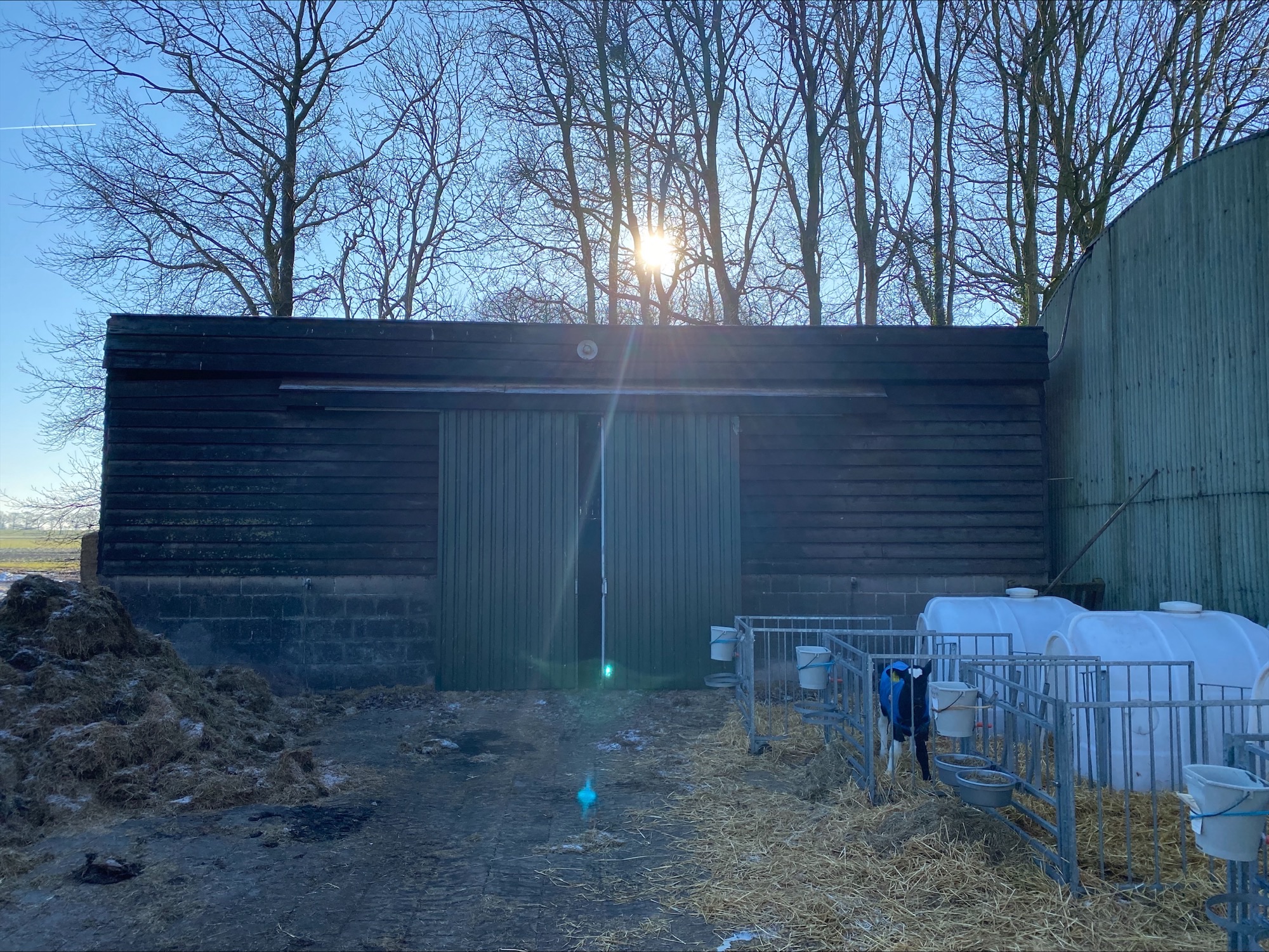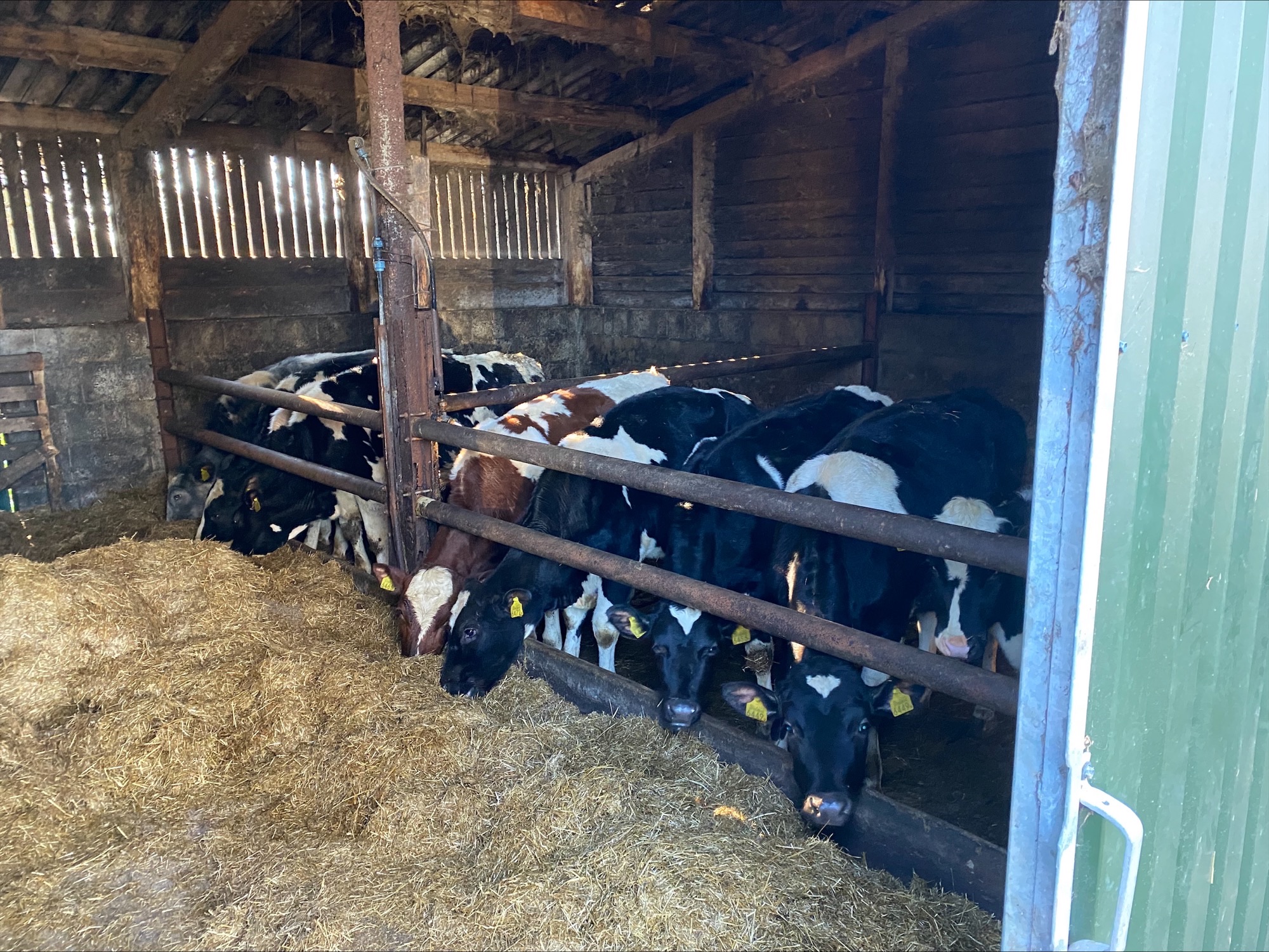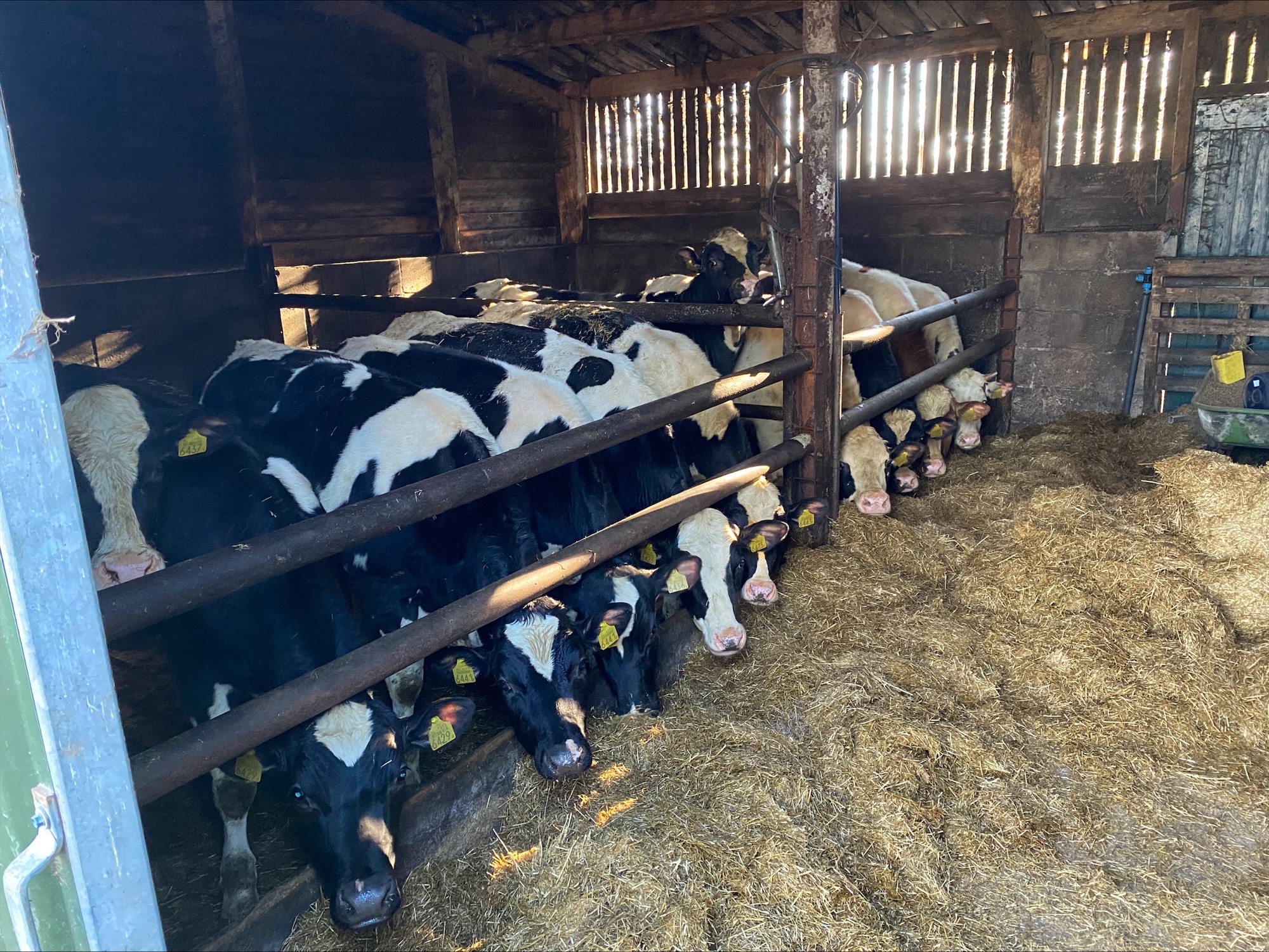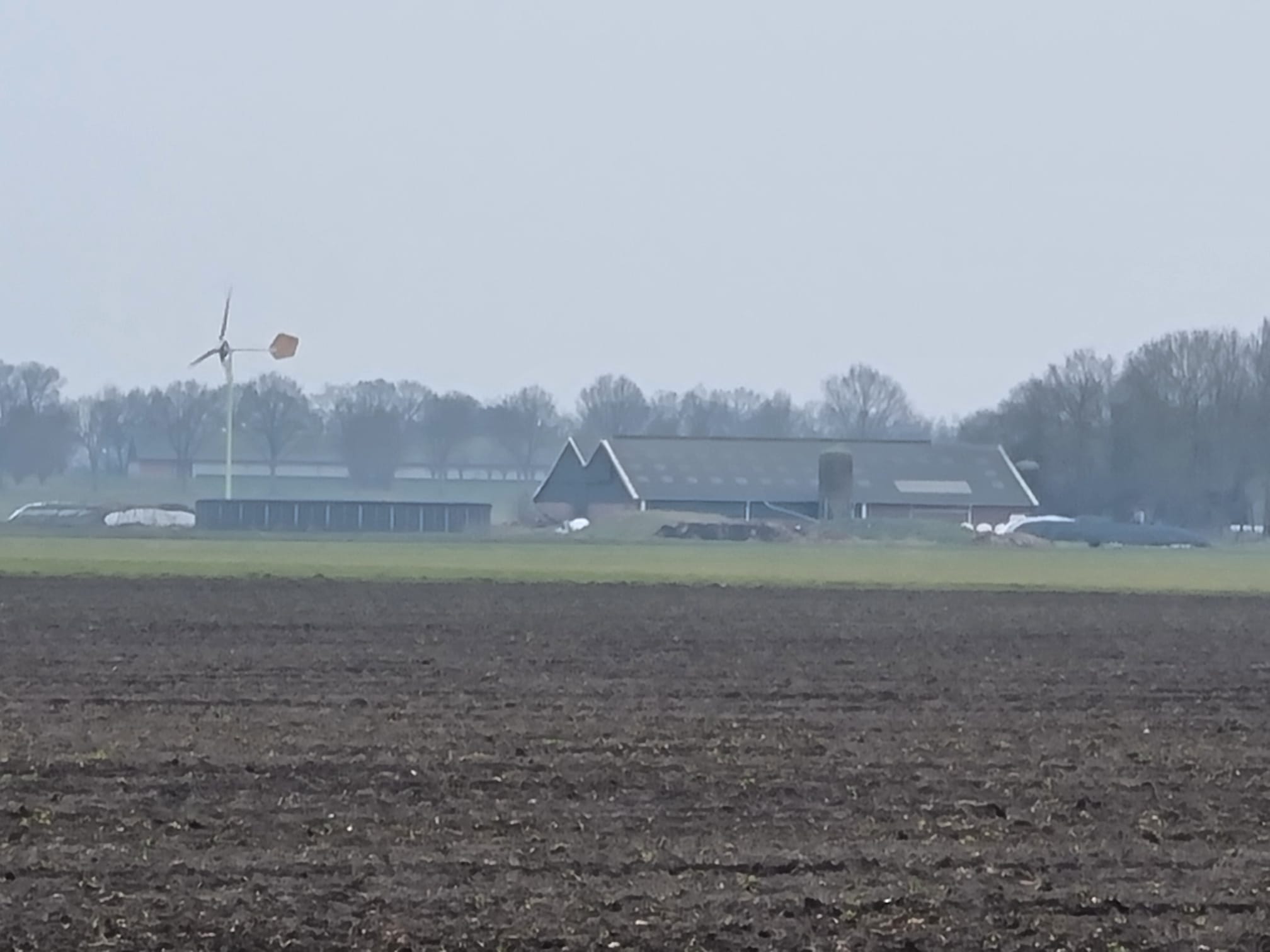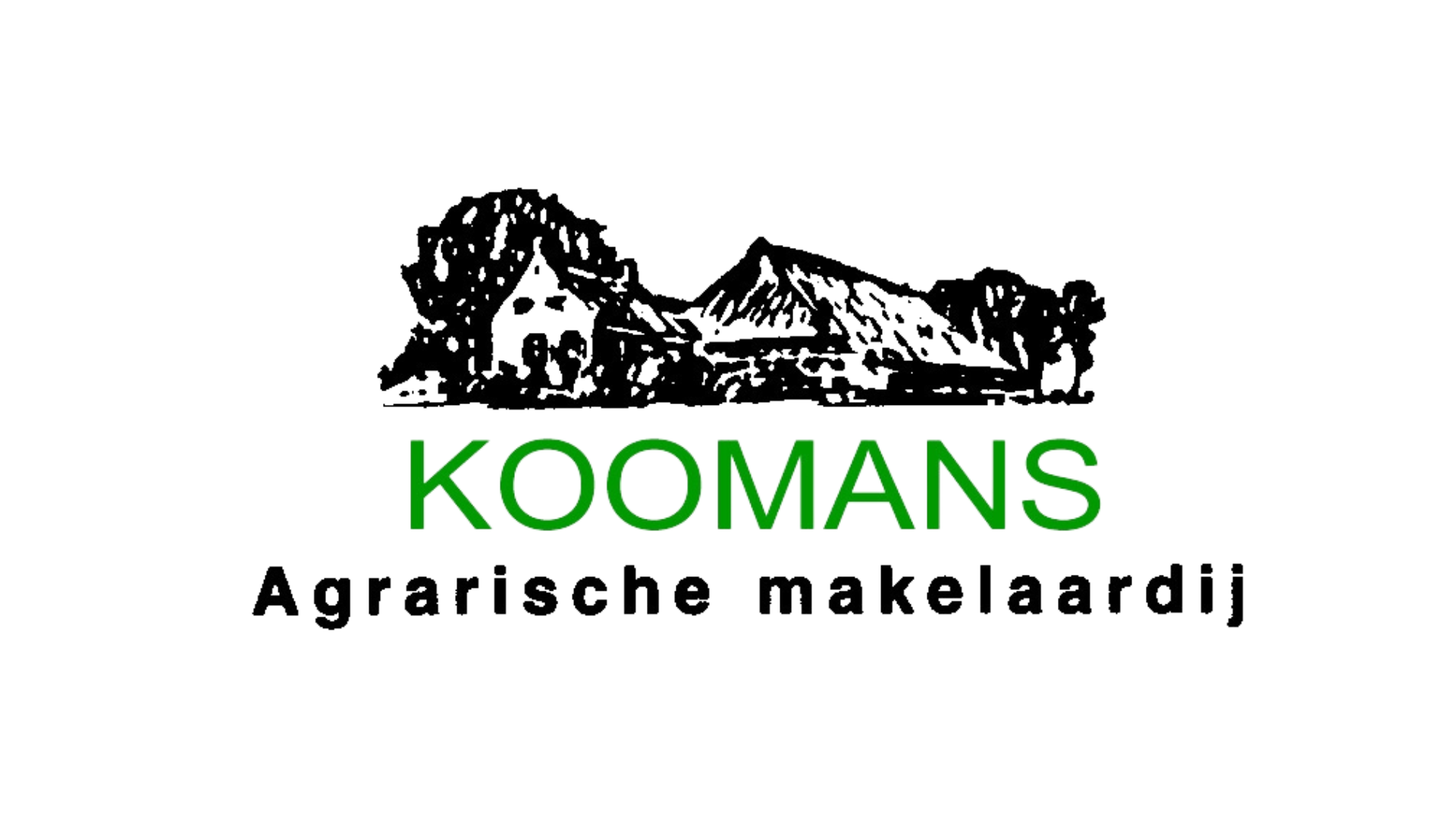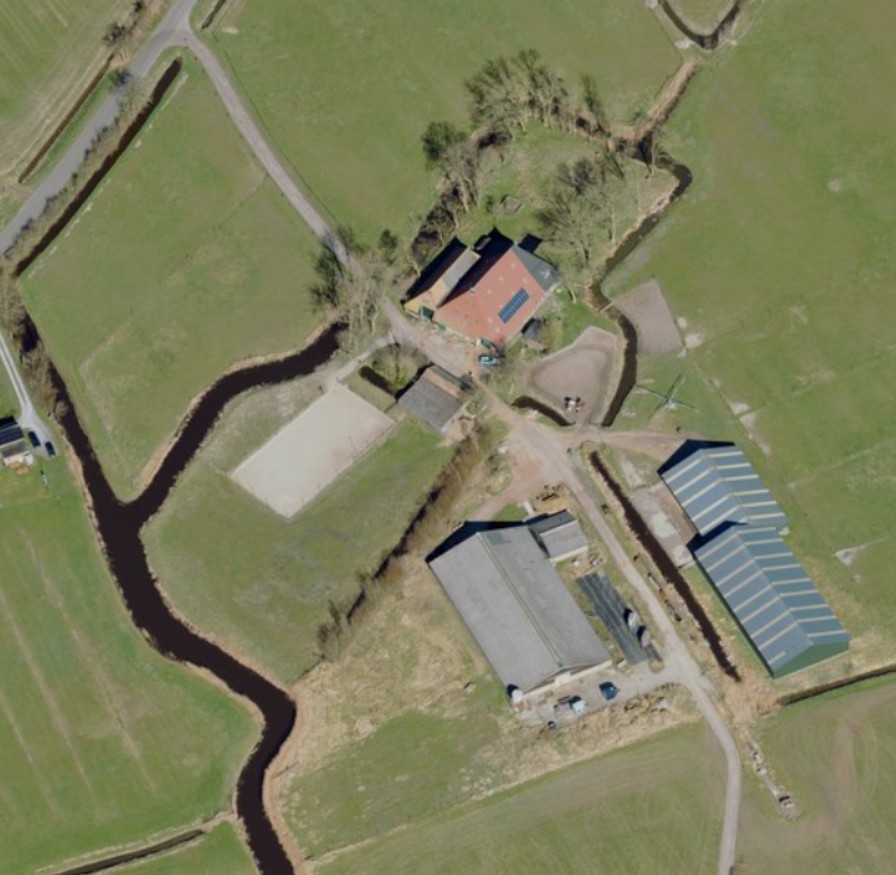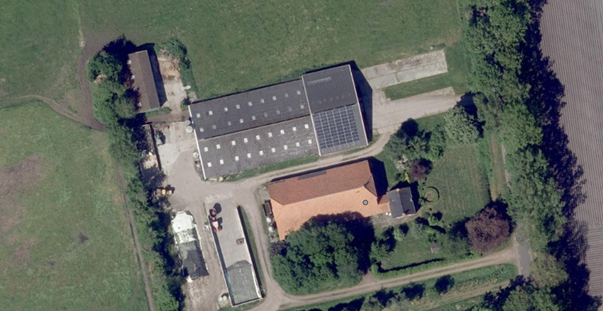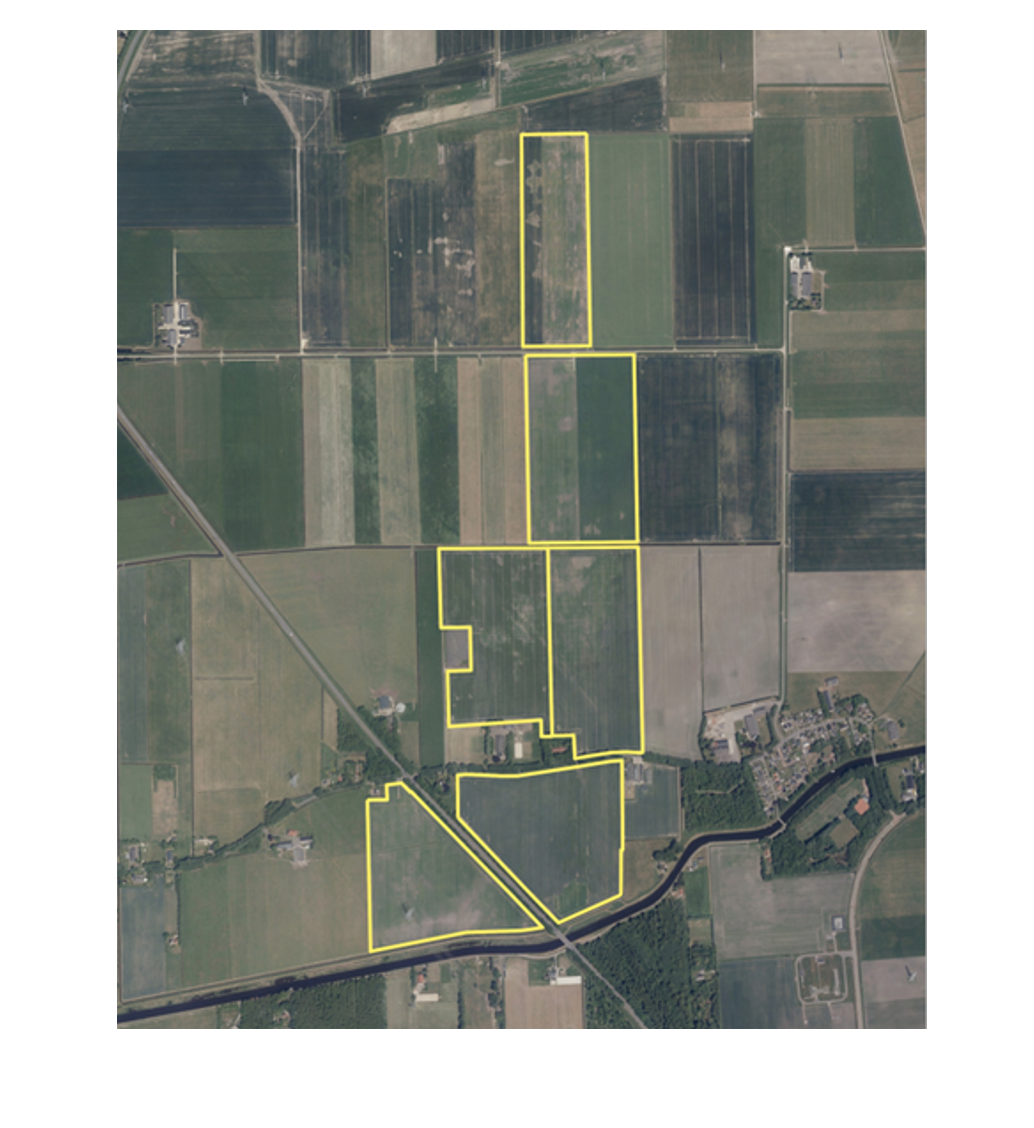Under Offer! Beautifully located, well-parceled dairy farm on over 55 ha of land
Groningen, Netherlands
Characteristics
Characteristics
Description
Possibly to be taken over as a going concern.
The company has a nature conservation permit issued on 13-02-2017 for 101 cows and 70 young cattle. Total 1,621 kg NH3.
The buildings consist of:
A farmhouse built in 1939 with the living area at the front and an indoor barn at the back (approx. 235 m²) containing former tied livestock stalls and straw pens for the youngest calves.
The living area has partial double glazing and is heated by gas heaters.
Layout: Side entrance into utility room, kitchen, living room, bedroom, office space, bathroom with shower cabin, bathtub, sink, and toilet.
Upstairs: landing with three bedrooms.
The dairy cows are housed in a two-bay cubicle barn, the first part of which was built in 2003 and the second in 2009. It is a barn with a feed alley with approx. 125 large cattle cubicles divided over six rows with concrete slats around them. Except for the feed alley, the entire barn is basement with a total capacity of approx. 1,500 m³.
In 2016, the barn was extended by 5m over the entire length. In this extension, a new 2x10 SAC milking parlor was realized with a waiting area with a crowd gate behind it. In front of the milking parlor is a straw pen.
The barn also contains four young concentrate feed boxes and a tank room with a 10,000 l tank and a machine room.
Finally, there is a "skybox" in the barn containing a management computer.
There is a heifer barn with 4 slatted pens for a total of approx. 20 heifers and there is a Romney shed approx. 26x10m for storage and machine shelter.
In 2009, a wire mesh silo was placed behind the cubicle barn with a capacity of approx. 1,250 m³.
A silage pit made of concrete slabs with dimensions of approx. 60x8m has been laid for storing silage maize.
There are 68 solar panels on the cubicle barn and an EAZ wind turbine behind the barn.
Almost 12 ha of the land lies in two plots in front of the house, directly across the road, and approx. 45 ha in three plots behind and around the buildings.
The soil consists of humus-rich, peat-colonial soil that is not only suitable for growing grass but also for growing silage maize or other arable crops.
There is no land consolidation rent on the land and the hunting rights are rented out in two parts.
There are a total of 5,701 phosphate rights at the company. These are not included in the asking price but can be taken over along with livestock, machinery, and stocks.
We strive to contact you within 48 hours.
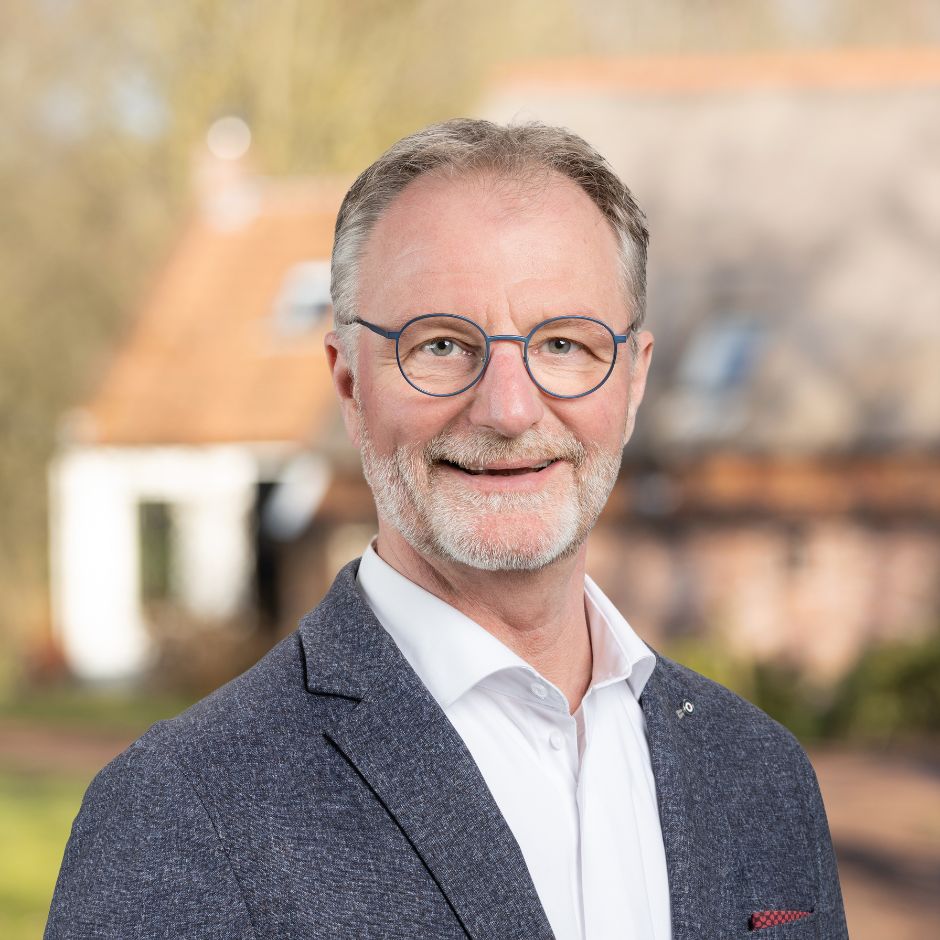
The Netherlands
With a population of over 17 million and an area of 41,543 km², the Netherlands has a high population density of 504 per km². About 18% of its surface area consists of water, and a significant portion of the land and population is located below sea level. The country is protected from water through a system of dikes and waterworks. Polders have been created through land reclamation. The landscape of the Netherlands is flat almost everywhere. The Dutch landscape mainly consists of cultural landscapes and managed nature reserves. Over the centuries, not only has the natural environment changed, but due to the shrinking and fragmentation of habitats and environmental pollution, both the quality and quantity of nature have deteriorated. Efforts are being made through nature policy and private initiatives to reverse this trend.
Through diversification in agriculture, entrepreneurs must also try to generate income from non-agricultural activities. These include agricultural nature and water management, agro-tourism, and care farms.
